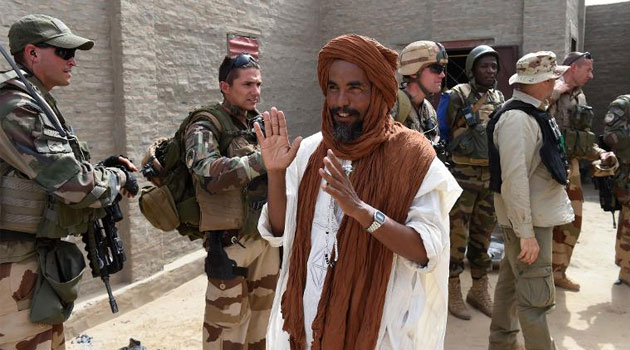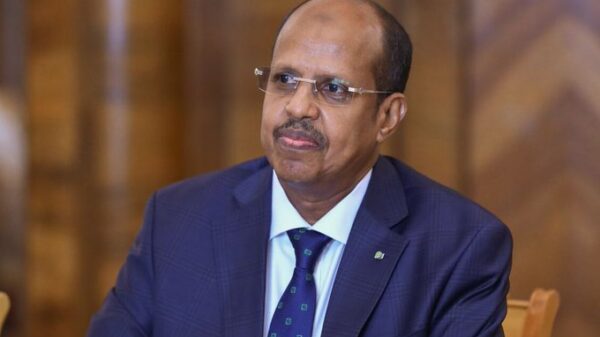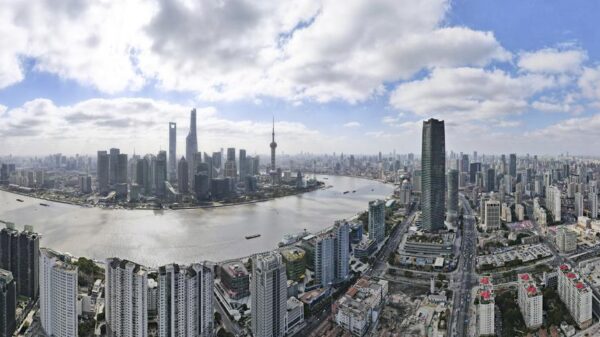
A man welcomes French soldiers from the 93rd Mountain Artillery Regiment on June 2, 2015 in Douekire in Timbuktu region, northern Mali
© AFP/File
TIMBUKTU, Mali, Jun 11 – Confronted with jihadists, separatists, traffickers and bandits, all in similar pick-ups and wearing the same military garb, French troops in Mali face a vexing conundrum — figuring out exactly who the enemy is.
It has become a problem, too, for the international community following the formulation of a peace deal signed on May 15 by the Malian government and its allies, and due to be ratified by the Tuareg-led rebellion this month.
In the northwestern desert of Timbuktu, the soldiers of the French “Operation Barkhane” find themselves fighting what the force, with its weakness for a pithy acronym, has termed GAT, or “armed terrorist groups”.
These should never be confused with GAS — or “armed signatory groups” — militants who are on board with the peace process and are, theoretically, no longer part of the problem.
Yet in the harsh realities of desert combat, the nuance can sometimes be lost.
Seen from the sky or through binoculars, the fighters of Al-Qaeda in the Islamic Maghreb (AQIM) can look no different from the Tuareg rebels or armed bandits and smugglers who have always plied the region.
Each group uses the same Toyota pick-ups, loaded with bags and jerry cans, wears the same tunics and scarves typical of desert populations, and carries the same Kalashnikov assault rifles.
– Avoidance strategy –
“It is not the job of Operation Barkhane to combat banditry, so the challenge is to find out who we should be dealing with,” says one of the mission’s commanders, Lieutenant Colonel Laurent.
“We had kind of the same problem in Afghanistan,” says the officer, who follows the military convention of only allowing his first name to be used, as he and his men patrol an area west of the city of Timbuktu.
“We found that the GAT adopted a strategy of avoidance with us. They are well informed about our movements, and run away from us.”
In a report published on May 22 entitled “Mali: An Imposed Peace?” the International Crisis Group think tank underlined the problem, criticising the peace process for making “no distinction between politico-military groups and terrorist groups”.
Divided into rival armed factions, plagued by drug trafficking and at the mercy of jihadism, Mali’s desert north has struggled for stability since the west African nation gained independence in 1960.
The militant Tuareg movement has launched four uprisings since 1962 to fight Mali’s army over the territory they claim as their homeland.
In spring 2012 northern Mali fell under the control of jihadist groups linked to Al-Qaeda, who took advantage of the confusion caused by a military coup to impose a brutal interpretation of sharia on the region.
The Islamists were largely ousted by the French-led Operation Serval launched in January 2013, although they have since launched sporadic attacks from desert hideouts on security forces.
When Barkane’s aircraft spot a gun battery mounted on the back of a pick-up, it’s a clue as to the identity of the assailant, but since Serval the jihadists have become smarter at concealing their identity.
– Removing Islamist clothing –
“Now they they travel in twos or threes, by motorbike or on foot,” says Talpi Ag Hama, a Tuareg family head who spent 2013 in Mauritania, and fears the ongoing lack of security will force him to return.
“They understood that the French have nothing against thieves. So all they need to do is remove the Islamist shirt and put on the bandit shirt to be left in peace. That is what is happening.”
Pragmatic family clans have made a specialty of changing affiliation and flag depending on which faction in the deeply divided north has the upper hand at any given moment.
“Competition for the control of strategic commercial and trafficking routes lies behind many of the armed clashes in northern Mali,” UN chief Ban Ki-moon said in a report to the Security Council two months ago.
Pictures taken by UN drones on December 24 showed two convoys of trucks loaded with cigarettes — each escorted by different armed groups, he said.
The French anti-jihadist mission is further complicated by skirmishes between the Malian army and the Coordination of Azawad Movements, the Tuareg-led rebel alliance.
“Clashes between pro-Bamako groups and Azawad fighters have nothing to do with us,” says Laurent, adding that an exception is made when French troops are threatened.
“In that case, we respond. In other situations, it’s delicate.”














































